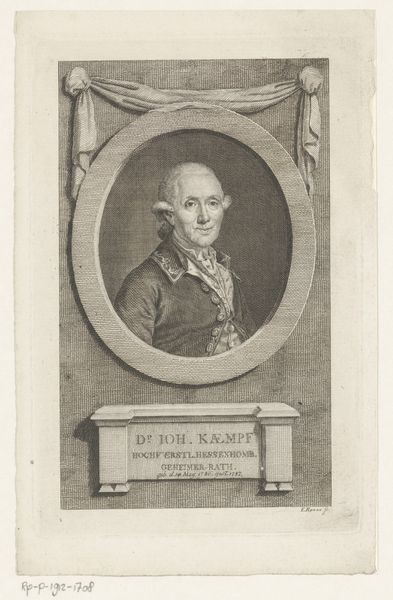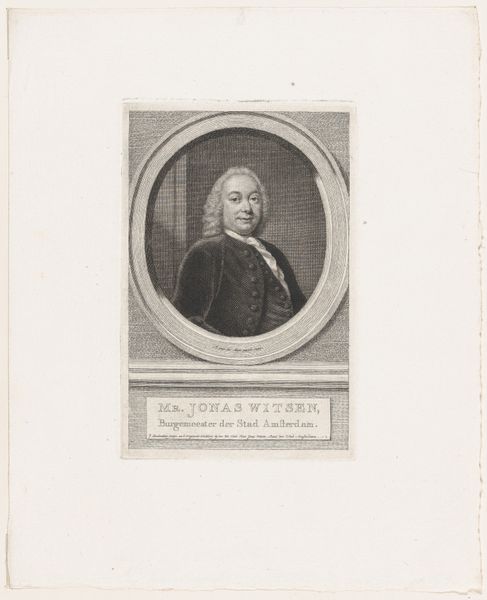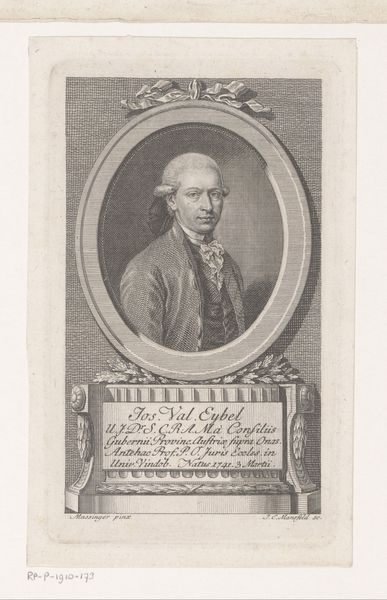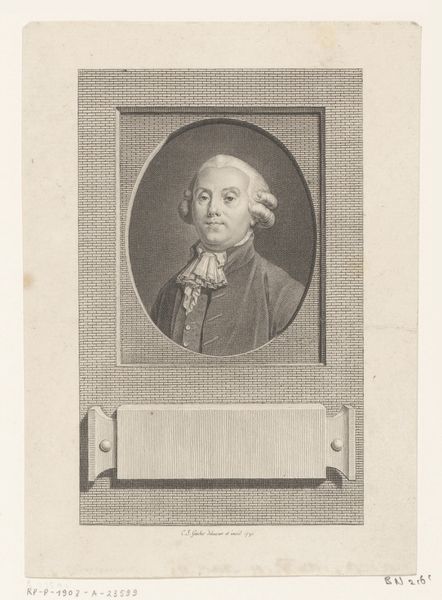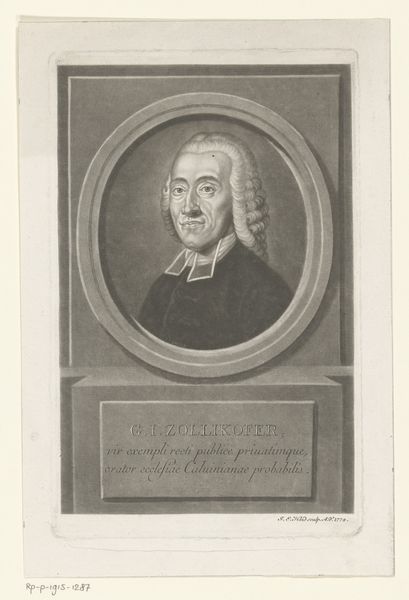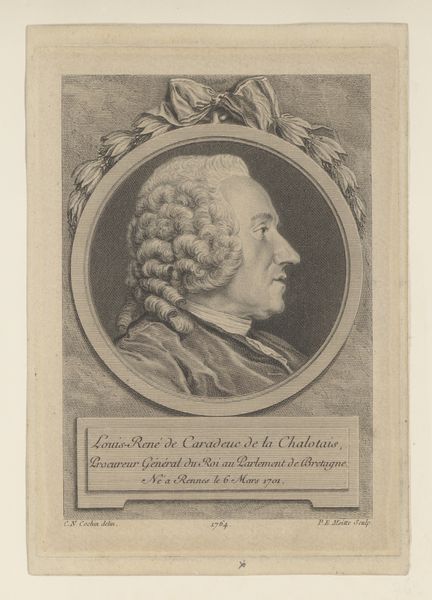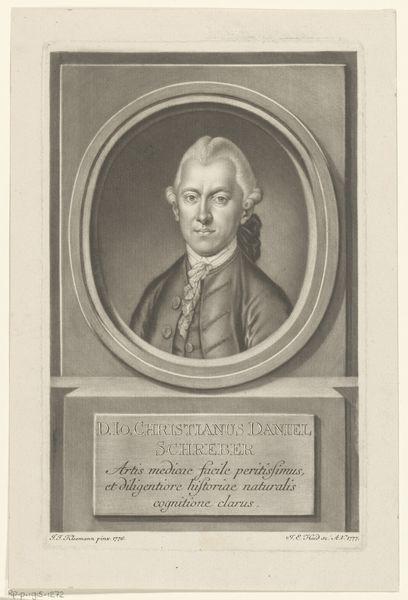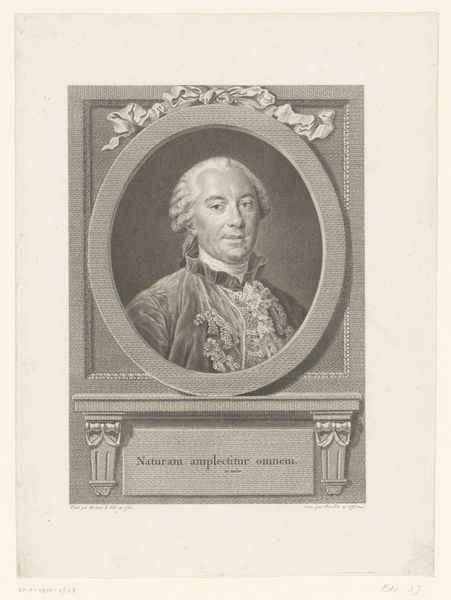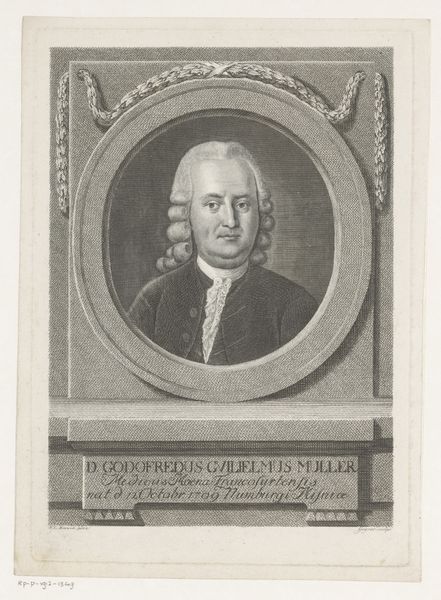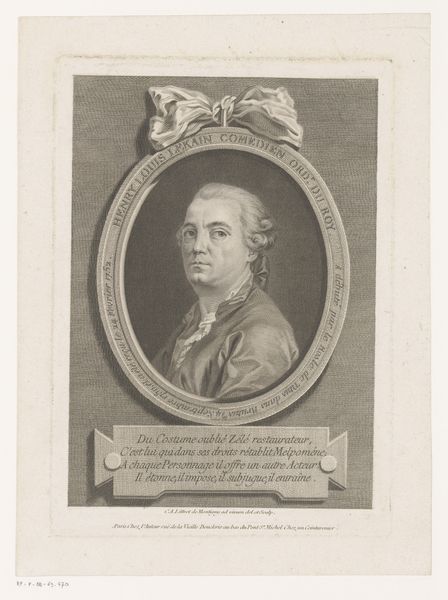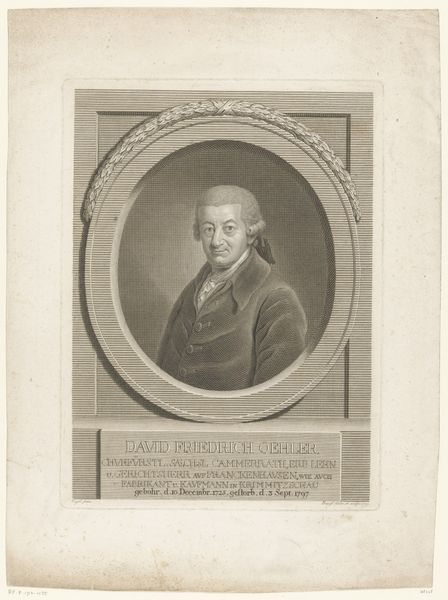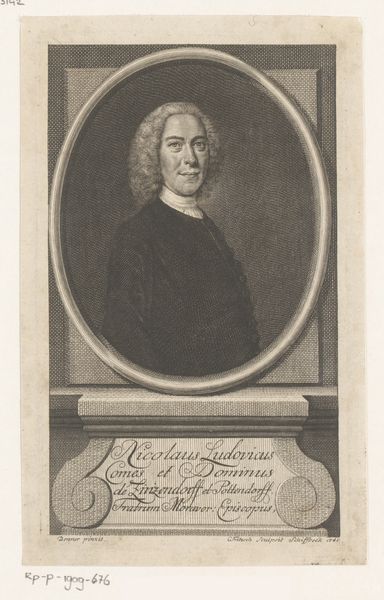
Dimensions: height 223 mm, width 142 mm
Copyright: Rijks Museum: Open Domain
Curator: We're looking at a piece from 1775, an engraving by Johann Elias Haid, titled "Portret van Hans Caspar Hirzel." It resides in the Rijksmuseum collection. Editor: It's strikingly formal, isn't it? That cool detachment in his gaze, framed by the oval border, almost imposing, but there is an aloof sensibility. Curator: Yes, the artist clearly employs Neoclassical elements, even bordering on the late Baroque perhaps, drawing on the aesthetics of earlier periods, visible in the refined detail of the engraving itself. The inscription presents Hirzel, seemingly a contemporary notable, perhaps a lauded figure for their time. It clearly intends to portray respect and civic value. Editor: The text indeed, adds a layer. It is clear he was wealthy; yet the presentation also indicates some contribution to society, possibly one whose country estate ("silvestria rura") eclipsed even cities ("urbes"). Was he perhaps idealized by the society, his presence amplified as a symbol? What can we unravel by exploring this presentation? Curator: Such presentations were essential. The Enlightenment valued portraits of exemplary figures, and prints made them accessible. They circulated ideas about ideal citizenship, often within privileged circles who could commission or purchase them, forming opinions about moral values that influenced governance and power. Editor: This image functions then almost like propaganda; shaping ideals and justifying societal structure. Who gets remembered and how? In what narratives do they figure? It becomes about power, class and access...all very uneven. Curator: Precisely! It's a reflection of how elites used imagery to consolidate their standing and communicate moral authority to their peers. So this portrait goes beyond likeness; it tells us about the socio-political aspirations of the 18th-century elite. Editor: Thank you for offering perspective! Reflecting on it, a somber realization sets in, recognizing these structures which uphold social hierarchies; something to remember when considering representation of leaders even in contemporary art. Curator: Indeed, reflecting on how past narratives persist allows us to thoughtfully critique their continuous presence in cultural institutions and the wider world.
Comments
No comments
Be the first to comment and join the conversation on the ultimate creative platform.
